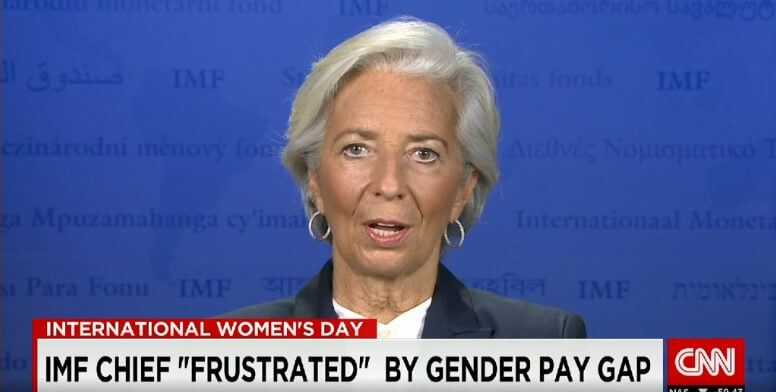
IMF Chief Christine Lagarde ‘frustrated’ by gender pay gap
CNN Money
March 7, 2017
By Kathryn Vasel
The gender pay gap has persisted for generations, but the end could be in sight for young women.
Pay equity could be achieved in developed markets by 2044, according to new research released by Accenture on Tuesday.
That’s 36 years earlier than previous estimates of 2080, and means women who graduate in 2020 could see equal pay during their working careers.
“Young women are making decisions now that could help close the gap,” said Julie Sweet, North American CEO at Accenture.
To achieve pay parity, the report outlines three things that need to happen: digital fluency, career strategy and tech immersion.
Digital fluency: Better incorporating digital technologies to connect, learn and work through things like online banking and using social media to network, would bring more women into the workforce and reduce the pay gap by 21% by 2030.
“Women tend to lag in adopting new technology quickly,” said Sweet. Becoming more efficient in digital technology can boost women’s participation in local job markets.
Career strategies: By choosing different college degrees and career paths and improving workplace support can also increase women’s earning power.
Men are more likely to pursue a major with higher earning potential than women, and are also more likely to make choices that help advance their careers, Accenture found. For instance, 53% of male undergrads continuously learn new digital skills compared to 44% of females.
Women also need to be more proactive in advancing their careers and seeking out mentors, the report found.
When it comes to career advancement, 51% of male undergrads hope to move into a senior leadership position one day, compared to 41% of female undergrads.
“The choices that young women undergrads are making now are setting them up to enter the workforce with fewer digital skills, less mentoring advice and lower interest in pursuing jobs that pay the most, compared to their male peers,” according to the report. Choosing to work at a bigger company can also boost a woman’s income, noted Sweet. “If you choose to work at a larger company over a smaller company, you are more likely to be higher paid.”
Tech immersion: Increasing women’s technological and digital skills is also a major factor in bringing pay parity.
While earning a STEM-related degree increases a woman’s chances of working in a higher-paying career, it’s not necessary.
“It’s literally immersing in more technological skills through course work,” said Sweet. “It is taking a computer science or coding course.”
Taking classes in more science and math-related fields can also be career and salary boosters.
Combining these three strategies would narrow the worldwide pay gap by 35% by 2030 — and add nearly $4 trillion to women’s incomes.
“There is a very clear and achievable road map,” said Sweet. “This is not some pie in the sky idea.”
The pay gap has been persistent. Globally, women in developed markets currently earn an average $100 for every $140 a man earns and women are much more likely to have unpaid work.
The gap tends to narrow when factors like education level, total hours worked, type of work, experience and job tenure are taken into account. Women also face barriers like gender stereotypes and bias in the workplace that can also impede pay parity and workplace advancement.
In developing markets, these three steps would fast forward pay equality by 100 years, achieving it by 2066.

Comments